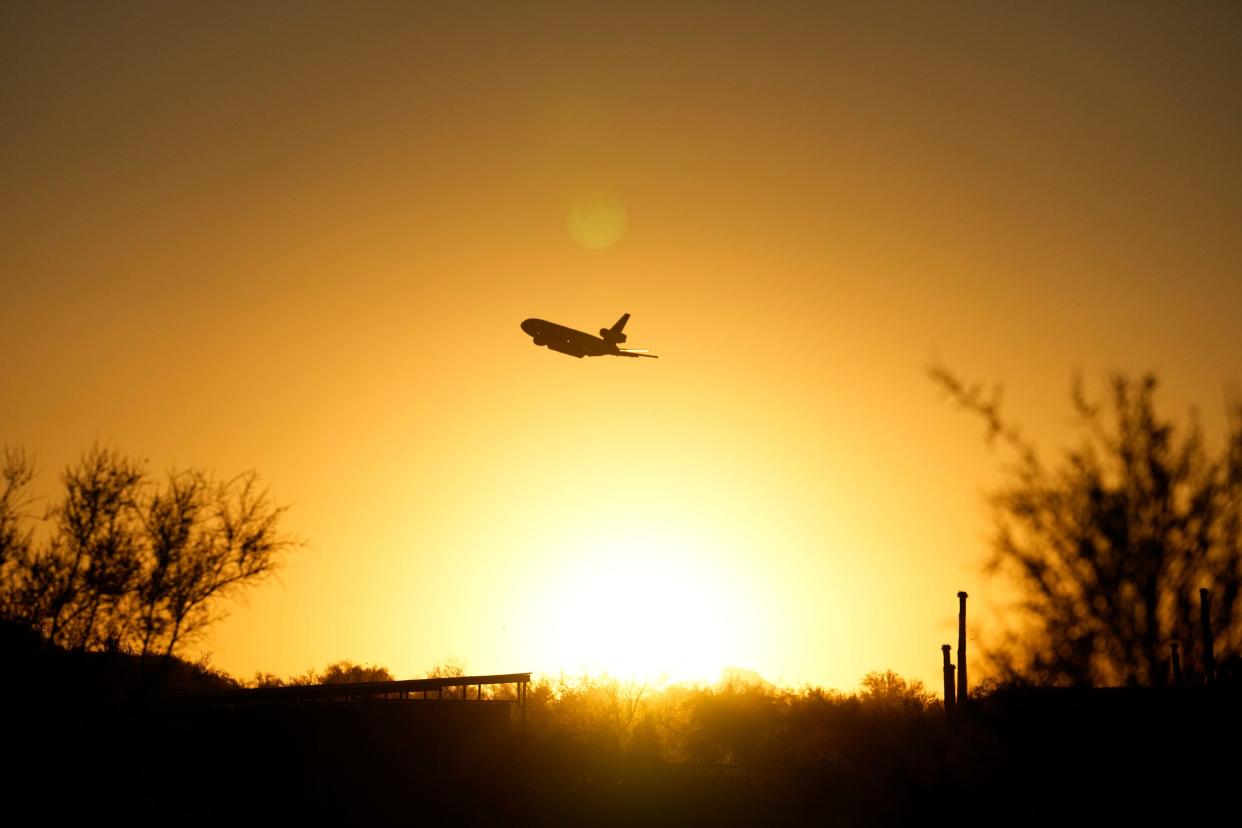Arizona's wet winter, slow monsoon has spared the forests and fueled desert wildfires

A convergence of wet and dry seasons in an area increasingly plagued by invasive grasses has left the desert edges of metro Phoenix vulnerable for wildfire this month, fire ecology specialists say.
You might call it a perfect storm of fire conditions, except there’s been no recent storm. The stalled arrival of Arizona’s monsoon storms while the summer sun heats and dries the region has amped up the desert’s flammability, contributing to blazes like the Diamond Fire on Scottsdale’s edge, said Michael Crimmins, an environmental science professor and extension specialist at the University of Arizona.
The same jet stream “wiggle” that has baked Texas has wedged Arizona between high pressure there and low pressure in California, a recipe for wind on top of the recent dry heat.
For subscribers: Hoping to save lives, experts work on new air quality messaging strategies in Phoenix
“It just leaves you in this really sticky spot where it’s very hot, with very dry air, and then it’s windy, too,” Crimmins said.
But that’s not all that has primed the Sonoran Desert to burn this summer. First came the powerfully wet monsoon seasons of 2021 and 2022, followed by a wet winter that has so far protected high-country forests but left the desert flush with vegetation, and susceptible. As Crimmins sees it, the flowery “super blooms” of late-winter wildflowers this year were a warning.
“It was beautiful,” he said, “but a lot of us knew it was going to turn into fuel.”
The wonder of this fire season may be that people haven’t set off more blazes, said wildfire expert Stephen Pyne, an emeritus professor at Arizona State University’s School of Life Sciences.
“I’m not surprised we have a fire this season, after a wet winter, with its bloom of forbs and grasses,” Pyne said. “I’m surprised we haven’t had more. People seem exceptionally well-behaved.”
Conditions vary year to year, but fire is a common threat where desert meets city. Cave Creek residents have dealt with repeated fires, including the Ocotillo and East Desert fires in 2020. In 1995 the Rio Fire burned more than 20,000 acres in and around Fort McDowell Regional Park, near where the Diamond Fire is now burning.
On top of seasonal drying, the mix of vegetation is shifting in a potentially dangerous direction on the edges of metro Phoenix.
“Regarding the fire scene, I think the secret sauce may be invasive grasses, especially red brome,” Pyne said.
This grass, highly flammable when dry, has replaced native desert vegetation, including saguaro cactuses, in areas along the Beeline Highway on the metro area’s east. It can generate its own cycle, increasing fire frequency, which wipes out other species and grows more grass to burn again.
A similar cycle is playing out around Tucson, but with invasive buffelgrass.
As the changing climate continues to warm the Southwest in years ahead, Crimmins said, there’s reason to expect more fires — and more fire intensity — on Arizona’s desert edges.
“A little bit more heat can make the fires burn later into the night,” he said, reducing the usual aid from nocturnal cooling and its resulting relative humidity.
Brandon Loomis covers environmental and climate issues for The Arizona Republic and azcentral.com. Reach him at brandon.loomis@arizonarepublic.com or follow on Twitter @brandonloomis.
Environmental coverage on azcentral.com and in The Arizona Republic is supported by a grant from the Nina Mason Pulliam Charitable Trust. Follow The Republic environmental reporting team at environment.azcentral.com and @azcenvironment on Facebook, Twitter and Instagram.
You can support environmental journalism in Arizona by subscribing to azcentral.com today.
SUBSCRIBE TODAY: Act now, to get the best in local journalism. Subscribe at https://subscribe.azcentral.com/offers.
This article originally appeared on Arizona Republic: Fires on urban Arizona fringes may rise with warming, invasive grasses

